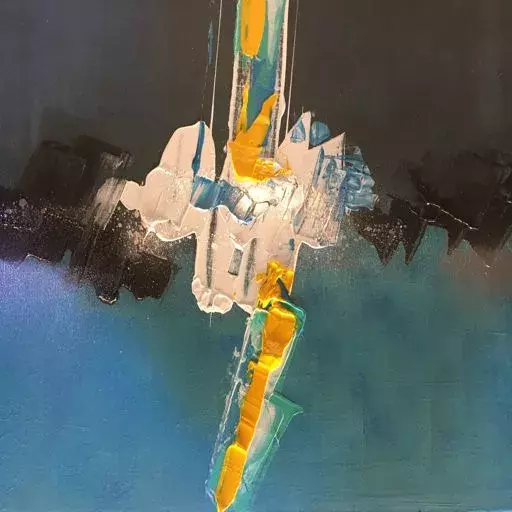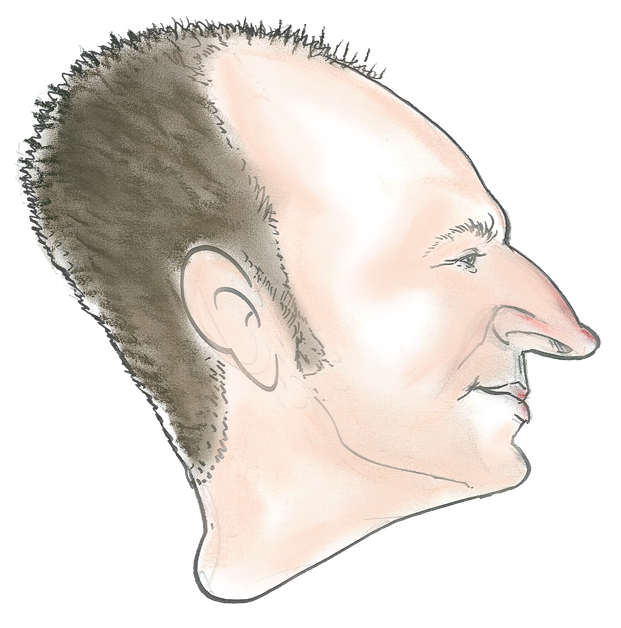I’ve watched a lot of resources about toner transfer over the last few days, and while everything was quite experimental and empirical, the main gist was : heat + pressure = toner transfer. As I didn’t want to, for obvious reasons, cook a dial full of unknown glues, paints and metals in the family’s kitchen oven, I started experimenting with my printer’s bed.
So I made a janky setup. I printed my design mirrored on a laser-compatible transparency sheet, cut it to size, secured it on a sterile dial with a bit of Kapton and cut a bit of rubber to try and spread pressure evenly. I then clamped the contraption to my printer’s heated bed.
Advantages: It’s basically free if you already have a laser printer, transparencies and a 3d printer laying around.
Inconvenients: It looks absolutely unprofessional up close. At regular wrist distance, it’s fine.
My first attempt was 30 minutes at 100°C. Way too much heat and/or pressure, the printing was smooshed and uneven pressure meant that parts of the design didn’t transfer properly. The sheet’s cutout shape was clearly imprinted on the glossy dial.
My second attempt (pictured here) was 15 minutes at 95°C. Much crisper lines and if not for a tiny bit of the logo that didn’t transfer (probably a speck of dust underneath), would have been perfect. The sheet’s cutout shape was still slightly imprinted on the glossy dial, on matte dials it might not be visible.
This process deserves to be refined as it brings an easy way to customize dials if you’re not aiming at super macro beauty shots, unfortunately I don’t have any spare dials anymore to experiment. I think a lower temperature and/or a lower pressure might work even better.
Edit: Here are my two attempts at making this dial:
Back in the day I saw people making attempts at this with gimcrack setups involving household irons. Your method is probably better.
I’ve done a lot of experiments with toner transfer and etching my own boards. The highest accuracy with the smallest clearance I can achieve is with old inkjet photo paper in my old HP laser printer. I have tried several different photo papers. They all act a little differently, but they all take up far more toner powder from the drum roller. I’m not sure why. It can be a pain to get the paper backing off of some of them, but when it comes to etching, it approaches photoresist levels using the typical overhead transparencies.
Just an idea to throw out there. This looks great already.
Be careful with inkjet photo paper in a laser printer. In particular, the glossy paper will typically have a coating that may come off in the laser printer due to the heat and pressure the printer uses, and that can cause issues over time.
Thanks for the feedback!
I’m pretty happy with the transparencies tbh. Although on mine, there seems to be two sides, one that gives a fuzzy dirty effect with a lot of stray toner around the actual print (looks like static), and the other side that gives perfectly crisp prints. Unfortunately I can’t really tell the sides apart.
Apart from that small speck of dust that prevented the transfer at the top left of the logo, the sheet came out perfectly clean, the totality of the toner was transferred to the dial. For PCB transfers where you could probably keep the sheet intact (I had to cut mine to fit between the applied indices), that would also mean the sheet would be almost indefinitely reusable.
As I didn’t want to, for obvious reasons, cook a dial full of unknown glues, paints and metals in the family’s kitchen oven
IMO everybody ought to get themselves a cheap toaster oven and a PID controller for craft purposes.
Might have used the bed for accelerating PCB etching :)
Very cool! This is the second time I see the heat-bed used in an ‘exotic’ way 😄
But what piqued my interest is, what the heck are you doing with watch dials? I know from buying a couple of watches that the dial is always considered a work of art, precision and crispness. What I mean to say is, dials seem to be uber important. And seems very, very difficult to mimic by yourself at home.
Are you trying to create watches and thus need to also create dials? Create new dials for existing watches? I’m super curious now 😀
Here you go ;) https://lemm.ee/post/35636122
I 100% agree with you, a professionally made dial is a work of art and should be absolutely perfect at any magnification. This is just a fun, cheap summer watch project for my own enjoyment ;)
The best looking alternative would have been to have the logo made by electroforming. They look perfect and very professional. Unfortunately the MOQs are usually quite large and therefore expensive, I couldn’t justify spending half the price of this project just on a logo (even if I had enough spare logos for several lifetimes).
Ah, clear. Have fun then! The end result look quite nice actually, fun project.





